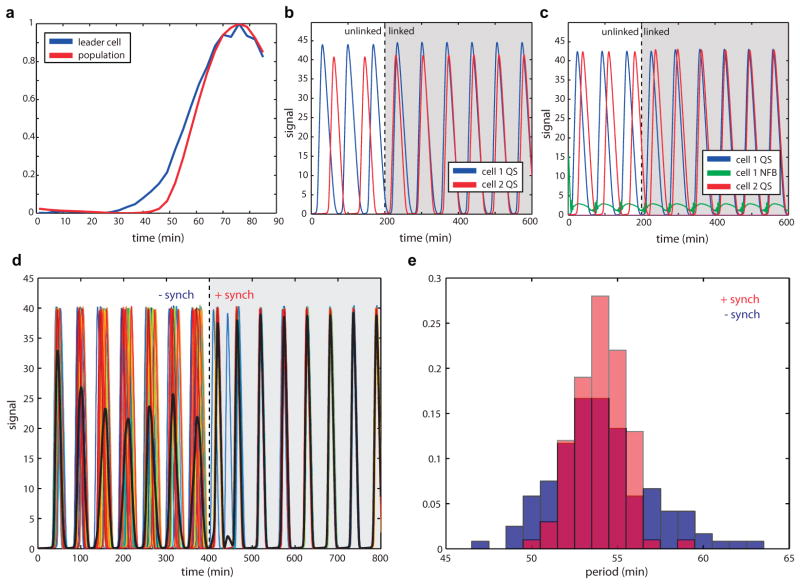Extended Data Fig. 2.
Cell-cell communication by AHL reduces variability in the quorum clock. (a) Individual “leader” cells show early activation of quorum clock proteins relative to the mean population response. (b) In a 2-cell simulation, cells 1 and 2 start out unlinked with slightly different constitutive production of AiiA and LuxI (α0). At t = 100min the two cells are linked through external AHL in the media, showing the cell with slower dynamics (2) linking up to cell 1 with shorter periods. (c) Cells 1 and 2 start out unlinked with cell 1 including intracellular clock dynamics (green) that result in higher frequency oscillations in cell 1. When the cells are linked (t =100), the slower cell 2, without the intracellular clock, links on to the faster cell through external AHL communication between the cells. (d) Trajectories of 20 cells with noisy constitutive production at lux promoter synchronize when their external AHL pool is mixed at t = 400min. Mean trajectory is shown in black. (e) Period variability after cell synching (red) is lower than in individual cells (blue).

